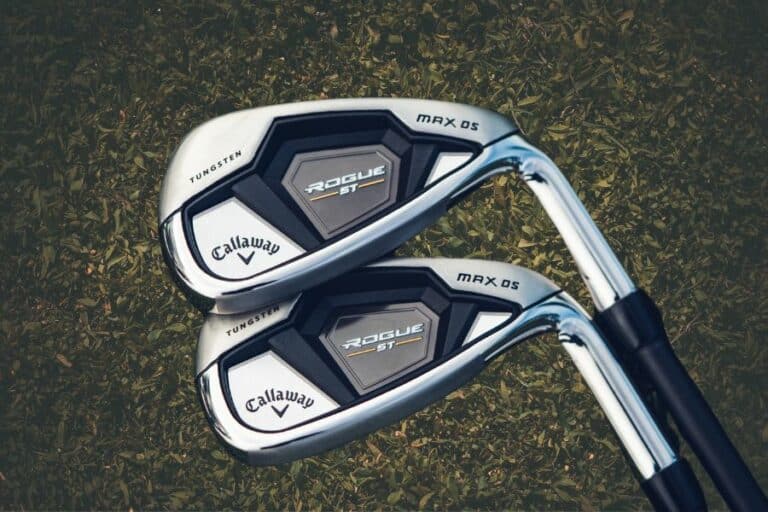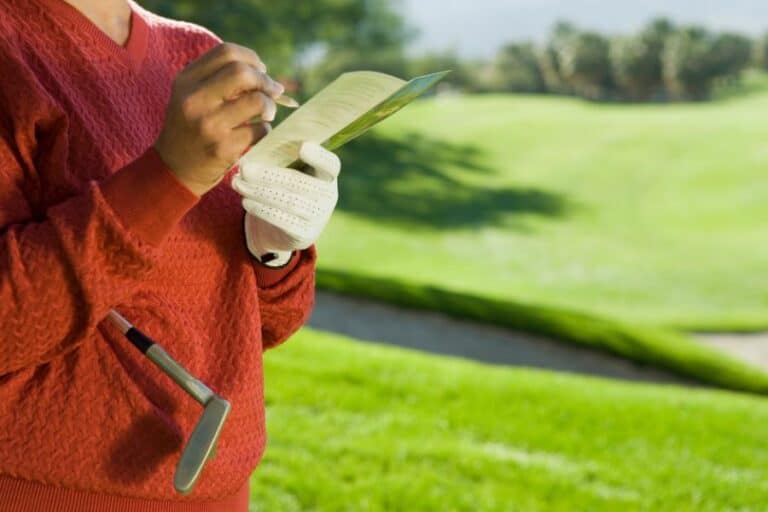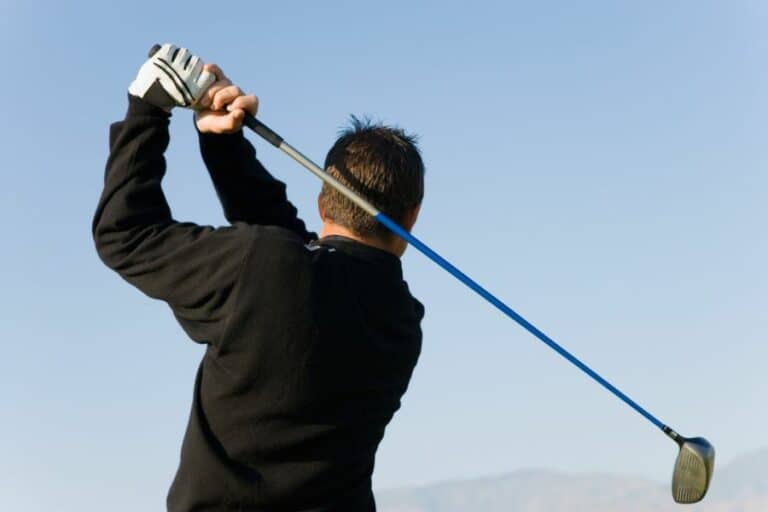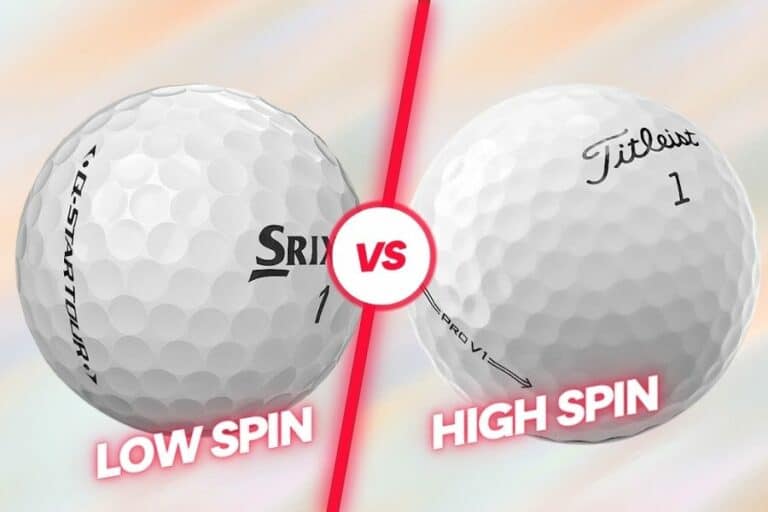Draw Vs Fade Shots – Differences, Benefits, And How To Hit?
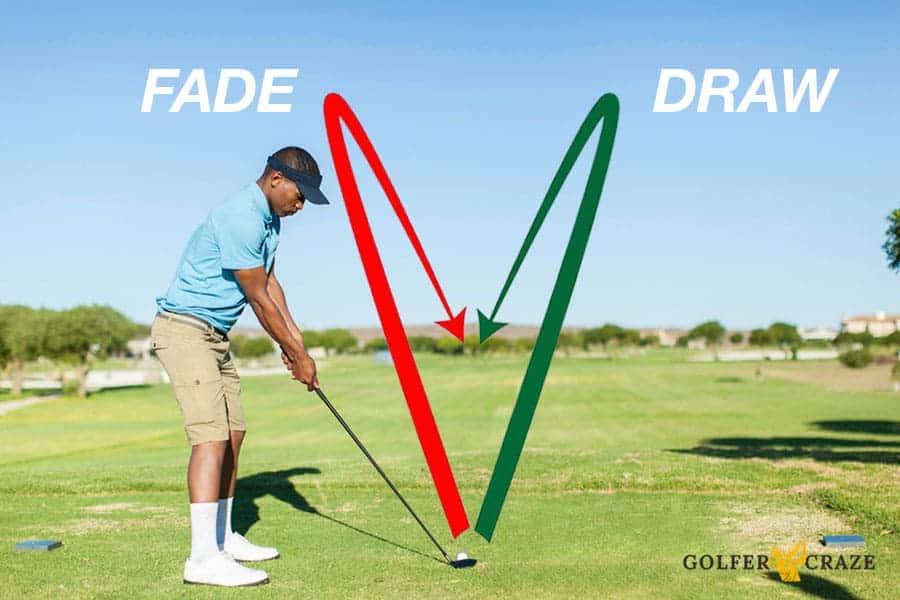
Draw vs fade is one of the most confusing golf terms used over the golf course while hitting the shots. But knowing how to hit them correctly and what are their benefits and differences is mandatory.
Draw and fade are the two styles of golf shot shapes commonly used to hit over the golf course. The two-shot flight pattern differs depending on the path the ball has taken when hit with the golf club head.
These shots usually help golfers when they need to avoid the obstacles such as trees or want better command throughout the golf game. Moreover, the point of the draw and fade for golfers is to have power over the ball’s direction and form.
But getting a draw or fade has its own benefits and drawbacks. This article analyzes the two golf shots – draw vs. fade.
Draw vs fade: Two golf shots
A draw is a controlled ball movement from the golfer’s right-hand side to his left-hand side, whereas a fade moves from the left-hand side to the right-hand side.
Note: This is for right-handed golfers, and for left-handed players, it is vice-versa.
In terms of performance, a draw and fade golf shot will produce similar launch angles, ball speed, and carrying distances.
Sidespin causes both “draw” and “fade” golf shots to finish slightly off-center. While too much sidespin is usually undesirable, a little side-to-side movement often optimizes or improves upon straight shots.
Many people find their natural swing has a draw or fade shape, but professional golfers can also hit these types of shots on purpose.
Now that you know the difference between fade and draw shots, we will further analyze both shots in-depth to understand better.
What is a draw?
A draw is a golf shot that curves to the right (for a right-handed golfer). This path is created by hitting the ball with an outside-in swing and adding a sidespin. The amount of sidespin can be adjusted to change the degree of curve or “draw.”
How to hit a draw in golf?
Hitting a draw golf shot requires minor adjustments to the stance and swing path only if you have mastered the basic swing shots.
To hit a draw, you need to follow the steps mentioned below: (for the right-handed player and vice-versa for the left)
Setting up the stance
Set up your stance by keeping in mind the standard height based on the club. Pick the right club based on your height to have a proper grip while hitting the shot.
Aim right of your target line

After setting up the stance, aim your body (shoulders, hips, and feet) to the right and clubface to the target line. This will help you give a closed clubface position to the swing path and result in a controlled draw shot.
Ball Position
The ball position is the next step to consider while hitting a draw. Place the ball back in the stance such that you strike the ball with less loft, giving a steep attack angle to give a lower trajectory shot.
Draw Swing Path

The golf swing path should be along the line of the body to get a controlled curved shape that is the draw shot. The draw shot takes place when you swing the club face path to the right, with the club face pointing to the left of the target line.
Pros and cons of hitting a draw
The pros and cons of draws are dependent on the situation. Generally, draws can provide more accuracy and control of ball flight by allowing you to curve the ball around hazards and land closer to the pin. However, with too much spin, there is a risk of overcurving or “pull-hooking” your shot into an even worse position.
| Pros | Cons |
| Increased performance levels on holes with obstacles or doglegs. | If executed improperly, the golf draw shot could result in the ball hooking. |
| A reliable and well-executed shot that can come in handy on certain holes. | You increase the likelihood of hitting a duck hook when your swing rhythm is slow. |
| Hitting a draw shot often produces less backspin than hitting a fade, which can make it easier to deal with windy conditions. | Unfortunately, a draw isn’t always great for greens or fairways as the golf ball gets twisted with fast sidespin. |
| A well-executed draw from the tee can also give your shot a clear path to the green. | Right-handed players may not find the draw to be their ideal shot on right-leaning dogleg holes. |
What is a fade?
A fade is the opposite of a draw and refers to a golf shot that curves to the left (for a right-handed golfer). This type of shot is caused by an inside-out swing with a sidespin. Again, the degree of curve or “fade” can be adjusted by increasing or decreasing the amount of sidespin.
How to hit a fade shot?
A fade in golf is a bit more challenging than a draw shot, especially for right-handed golfers.
The simplest way to hit a fade shot is to follow these steps:
Aim left of your target line
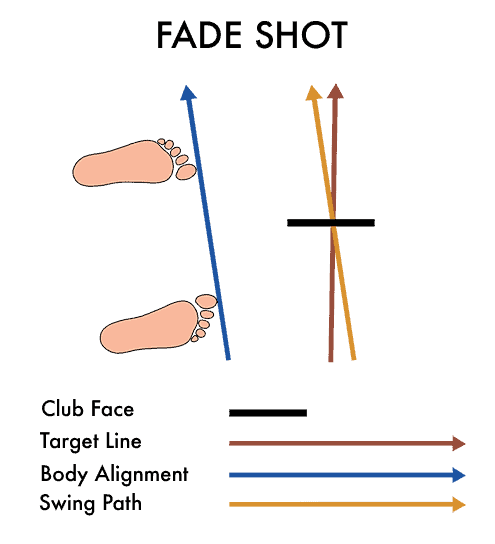
Set up your stance the same as the draw shot. Then, aim your body (shoulders, hips, and feet) to the left and clubface to the center line. This will help you give the swing path an open club face position and result in a controlled fade shot.
Ball Position
Place the ball slightly forward such that you strike the ball with a slightly higher loft. This gives a narrow attack angle leading to a higher trajectory shot.
Fade Swing Path
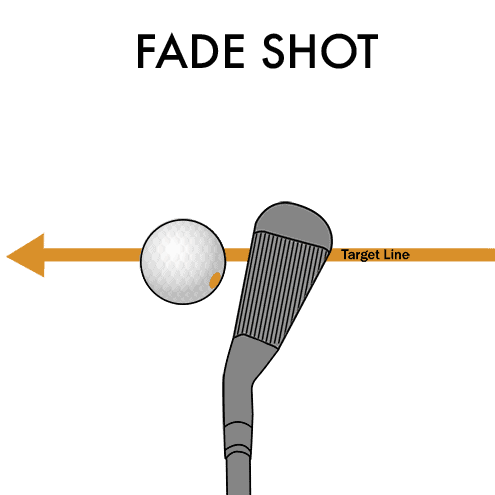
The swing should be such that the head of the club face is released and the finish is a bit higher than the arms.
Some people may fall behind the ball when they strike the lie, which puts more weight on the back foot.
Pros and cons of hitting a fade
The fade shots have become prominent in professional games today because they are usually easier to manage. The faded shot has a higher trajectory but lands harder, which makes it a helpful shot for hitting toward an under-stuck flag or on a golf course with fast, rigid conditions.
The main fallback of the fade comes from distances. The average fade shot moves much, is comparatively lighter, and has a longer length but is not as wide as the intermediate roll. Reducing yardage in a sport could be a simple tradeoff in exchange for gaining more yardage and striking more fairways or getting close to the flag.
| Pros | Cons |
| Helps in negotiating trees and other large obstacles on the course, similar to the draw shot. | Performing a fade instead of a draw shot on a left-leaning hole can be an immense disadvantage. |
| Incredibly advantageous for playing to a good position on the fairway or green on left-leaning dogleg holes. | If contact with the clubface and the ball isn’t at the right angle, it might result in a duff shot. |
Benefits of draw versus fade shot shaping
Shaping the shots helps while hitting the tee shot and approach shots from the tee box. Draw shots are great for avoiding hazards such as bunkers, trees, and water. The ability to shape the ball using a draw also gives you an advantage when playing into the wind or with a tight lie on the fairway.
- When playing a “dogleg left,” many golfers find that hitting a draw provides the best results. By curving the ball around the leftward bend, you may be able to get closer to the pin than with any other shot shape.
- With practice, you can learn how to control your draw vs. fade shot shapes more accurately and add consistency to your game. Fade shots are usually played deliberately to hit a precise target or layup shot of a hazard.
- Both types of shots can also be used to compensate for the golf course’s natural contours and wind directions.
- By mastering draw and fade shots, golfers can make their way around the course more effectively by avoiding hazards, using terrain to their advantage, and controlling the ball’s flight path. With practice, these shots can become an invaluable part of any player’s arsenal.
Is it better to hit a draw or fade?
The answer to this question depends on the situation. In some cases, a draw shot is better for avoiding hazards and using terrain to your advantage. In other cases, a fade shot may be necessary for hitting a precise target or layup short of a hazard. Ultimately, understanding when and how to hit a fade and draw shots will give you success on the course.
Generally, a draw has more potential than a fade. However, the fading of an area is possible when directions are somewhat closed. Although there are golfers claiming otherwise, for the draw, the club must still be opened correctly with the squared face.
Do pros hit fades and draws?
Professional golfers mostly strive to hit a draw with full-swing shots, yet their technique adapts when nearing the green. Indeed, for short-game shots, most pros utilize techniques that cause the ball to curve from left to right in an evasive fade pattern.
Conclusion
Draw and fade golf shots are two popular techniques for shaping shots that can be applied to many different scenarios on the golf course. While the draw and fade are very similar in purpose, both shots require a constant and precise swing to ensure the desired flight pattern. However, with practice and proper technique, these shots can be mastered and help golfers of all skill levels improve their game.
FAQs
What goes further, draw or fade?
The ball speed, launch angle, and spin rate are identical, and the draw and fade are similar in length. Generally, most club golfers hit a draw further than fade as it reduces loft, leading to lowered spin rate.
Is it easier to control a draw or fade?
The fade shot has been easier to control than the draw and is perfect for beginners. This is because fade shots tend to be steeper and have more ball spinning, and the golf balls do not bounce as much needed. The draw shot, on the other hand, can be tricky and often goes far left, turning to hooks instead.
Does tiger draw or fade?
During most shots, Tiger Woods prefers to fade if there’s room. His fade shot features clubface rotations, so it is no ordinary fade but a power fade shot. Tiger’s name has always strongly influenced power losses and draws, so he prefers it as a cutting.



